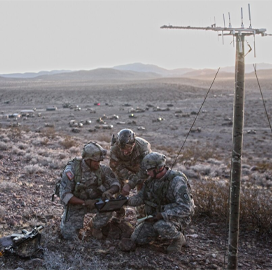U.S. Special Operations Command has begun seeking white papers from companies capable of developing new devices designed to deter and respond to electromagnetic threats.
In a notice posted on SAM.gov, USSOCOM said it seeks to develop, test, manufacture and deploy next-generation multimission electromagnetic countermeasures that will replace currently fielded ECM technologies systems beginning in fiscal year 2025.
USSOCOM is interested in technologies built to provide ground-based electronic attack, force protection, counter-unmanned aerial system and explosive ordnance disposal capabilities.
The command plans to award a follow-on production contract via an other transaction authority for the procurement effort.
Interested companies have until Feb. 17 to respond to the solicitation notice.





